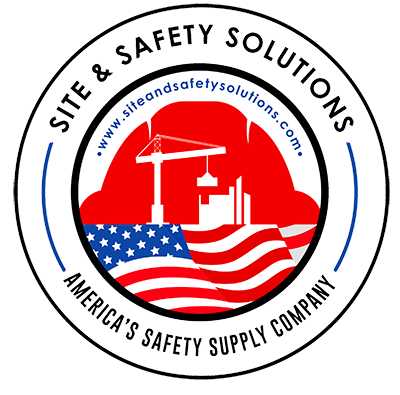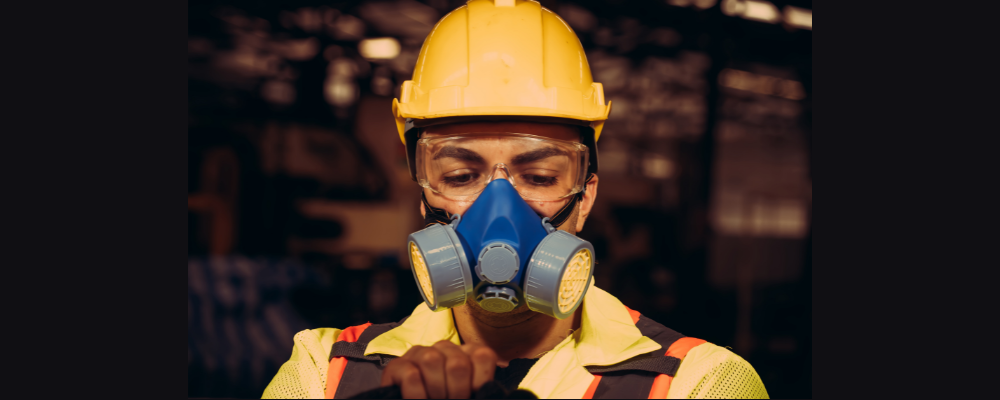
Introduction:
Construction sites expose workers to various airborne hazards, making reliable respirators imperative. This comprehensive guide navigates respirators’ significance and role in safeguarding workers’ health.
Why Respirators Matter in Construction
Respirators play an indispensable role in ensuring the safety and well-being of construction workers, primarily due to the hazardous nature of their work environments. The construction industry is rife with various airborne pollutants, including dust, fumes, gases, and other harmful particles. These substances pose severe health risks to workers if inhaled regularly or in high concentrations, leading to short-term and long-term health complications.
Hazards in Construction Environments:
1-Dust:
Construction sites often generate dust from cutting, drilling, and grinding materials such as concrete, wood, or metal. Inhalation of this dust can cause respiratory issues like bronchitis, asthma, and chronic obstructive pulmonary disease (COPD) over time.
2-Fumes and Gases:
Welding, painting, and using various chemicals in construction projects release fumes and gases that are hazardous when breathed in. These substances can cause irritation, dizziness, and, in extreme cases, damage the respiratory and nervous systems.
Role of Respirators:
Specialized respirators like the CH Respirator KN95 White and Honeywell 7700 Series Half Mask Respirator 770030 are designed to mitigate these risks. They offer high-quality protection by filtering out harmful particles and providing a barrier between the worker’s respiratory system and the hazardous environment.
- CH Respirator KN95 White:
This respirator model, designed with multiple layers of filtration, effectively blocks out airborne particles, including dust and microorganisms. Its ergonomic design ensures a snug fit, reducing the chances of particles seeping through gaps between the mask and the face. - Honeywell 7700 Series Half Mask Respirator 770030:
This respirator provides a comfortable and secure fit while protecting against airborne contaminants. Its durable construction and efficient filtration system make it an ideal choice for construction workers exposed to multiple hazards.
Importance:
The significance of respirators in construction cannot be overstated. They act as a crucial line of defense, safeguarding workers against the immediate and long-term health consequences of exposure to hazardous substances in their work environment.
In conclusion, specialized respirators like the CH Respirator KN95 White and Honeywell 7700 Series Half Mask Respirator 770030 protect construction workers from daily airborne hazards. These respirators provide a crucial layer of defense, ensuring the safety and health of individuals working in an industry where exposure to harmful particles is a constant risk.
Types of Respirators
CH RESPIRATOR KN95 WHITE
1-Designed to filter out at least 95% of airborne particles.
2-Protects against non-oil-based particles.
Honeywell 7700 Series Half Mask Respirator 770030
1-Half mask design for enhanced comfort.
2-Compatible with various filters for different hazards.
North P100 Safety Particulate Filter 7580P100
1-Offers high-efficiency protection against particulates.
2-It is recommended for various environments, including construction sites.
Honeywell North 7600 Series Full Face Respirator 760008A
1-Full-face coverage for maximum protection.
2-Dual cartridge system for efficient filtration.
Factors to Consider in Choosing the Right Respirator
Respirators are crucial protective equipment for construction workers, mitigating the risks of airborne hazards. Selecting the appropriate respirator involves assessing various factors to ensure efficacy and comfort during use.
Level of Protection Needed
Assess the Specific Hazards Present at the Construction Site
Before selecting a respirator, a comprehensive evaluation of the construction site’s hazards is paramount. Construction environments host an array of dangers, including:
Particulate Matter: Dust, debris, and other solid particles suspended in the air.
Chemical Fumes: Vapors and gases emitted from paints, solvents, or other chemical compounds.
Biological Hazards: Bacteria, viruses, or molds present in specific construction environments.
Combustible Particles: Elements that pose a fire risk in specific work areas.
Select Respirators with Appropriate Filtration Capacities Based on Identified Risks
Different respirators offer varying levels of protection against specific hazards. Consider the filtration capabilities of respirators concerning the identified risks. For instance:
Particulate respirators (e.g., N95, KN95): Effective against solid particles.
Chemical cartridge respirators: Designed to filter out specific gases and vapors.
Combination respirators: Protecting against multiple hazards simultaneously.
Comfort and Fit
Properly Fitted Respirators Ensure a Secure Seal
An airtight seal between the respirator and the wearer’s face is critical. A poorly fitted respirator can compromise its effectiveness. Factors impacting fit include:
Size and Shape: Respirators come in various sizes to accommodate different facial shapes.
Adjustable Straps: Enable customization for a snug fit around the nose and mouth.
Nosepieces and Chin Covers: Contribute to a secure seal, preventing air leakage.
Comfort Features Enhance Wearability
Beyond the seal, comfort is vital for extended wear. Features enhancing comfort include:
Adjustable Straps and Buckles: Enable customization for individual comfort.
Cushioning and Padding: Reduce pressure points and discomfort during prolonged use.
Lightweight and Breathable Materials: Allow for easy breathing without compromising protection.
Duration of Use
Consider the Duration of Exposure to Hazardous Elements
Workers may be exposed to airborne hazards for varying durations. Choosing respirators suitable for extended periods is crucial to ensure:
Breathability: Facilitates comfortable breathing during prolonged wear.
Moisture Control: Prevents discomfort due to sweat accumulation.
Durability: Ensures longevity and reliability throughout extended use.
Opt for Respirators Comfortable for Extended Periods
Prioritize respirators designed for extended use without compromising protection or comfort. Properly selected respirators will enable workers to perform tasks safely for extended periods without discomfort or fatigue.

Proper Usage and Maintenance
Correct Fitting Procedure
Properly fitting a respirator is crucial to ensure adequate protection against airborne hazards. Follow these steps in line with the manufacturer’s guidelines:
1-Clean Hands: Wash hands thoroughly before handling the respirator to prevent contamination.
2-Positioning: Place the respirator over the nose and mouth, ensuring a snug fit. Adjust masks with straps to achieve a secure yet comfortable seal.
3-Fit Checks: Perform fit checks by:
Cover the mask’s surface with both hands and exhale gently. If air leaks around the nose, adjust the nosepiece. If air leaks around the edges, readjust the straps.
Inhale sharply. The respirator should collapse slightly, indicating a tight seal.
4-User Seal Check: After adjusting, conduct a user seal check by blocking the exhalation valve with your palm and exhaling gently. If air leaks, readjust the respirator until a proper seal is achieved.
Maintenance and Storage
Regular maintenance and proper storage significantly prolong the lifespan and effectiveness of respirators.
1-Regular Inspection: Routinely inspect respirators for wear and tear, paying attention to:
1-Damaged or stretched straps
2-Deteriorated or torn mask material
3-Clogged filters
2-Cleaning Procedures: Follow the manufacturer’s cleaning instructions.
Some general guidelines include:
1-For reusable respirators, clean according to the specified method using mild soap or disinfectant wipes. Ensure thorough drying before storage.
2-Disposable respirators are not meant for reuse and should be discarded after use or when damaged.
3-Storage Conditions: Store respirators in a clean, dry area away from contaminants.
Tips for proper storage:
1-Use resealable bags or containers to protect respirators from dust and moisture.
2-Ensure adequate ventilation in the storage area to prevent mold or mildew.
4-Replacement of Components: Replace filters, cartridges, or any damaged parts following the manufacturer’s recommended schedule or when visibly worn out.
Importance of Adhering to Guidelines
Adhering strictly to the manufacturer’s guidelines for fitting, usage, and maintenance ensures the optimal performance of respirators. It not only protects against hazards but also enhances the longevity and effectiveness of the equipment.
For more information, visit our website and Facebook page.
For more products, visit our website :
Honeywell 7700 Series Half Mask Respirator 770030
North P100 Safety Particulate Filter 7580P100 – 1 Pair
Honeywell North 7600 Series Niosh Approved Full Face Respirator Dual Cartridge Silicone 760008A
Conclusion
Prioritizing the safety and well-being of construction workers is imperative. Respirators serve as indispensable tools in safeguarding their health amidst potentially hazardous environments.
In conclusion, selecting the fitting respirator, ensuring proper usage, and conducting regular maintenance are pivotal in maximizing safety on construction sites.
Enhance construction site safety and protect workers by equipping them with suitable respirators from Site and Safety Solutions. Your team’s well-being is our top priority.










